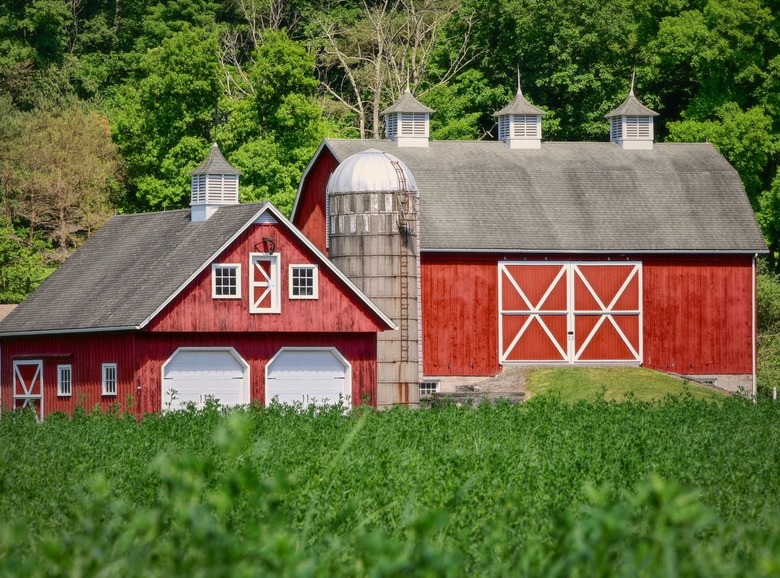Why Are Barns Always Painted Red?
When you think of a barn, what comes to mind first? A big, wooden structure that looks like a house? Or perhaps some farm animals? If you had to think of a color associated with barns, it would make sense if you instantly think of red. A red barn amidst a grassy field is a quintessential American image, but have you ever wondered why barns are red? The reason is steeped in tradition that has nothing to do with paint and has been upheld by farmers for centuries.
Why Are Barns Red?
Why Are Barns Red?
According to the Farmers' Almanac, hundreds of years ago, farmers created a homemade sealant to protect the wood of their barns. Since paint and sealant weren't readily available, they concocted a mixture of linseed oil, milk, lime, and rust to coat their barns. The rust was effective at keeping moss and fungi at bay and ultimately turned the mixture red. Now, farmers can seal and paint their barns whatever color they like, but red remains the most popular, keeping the lineage and tradition of red barns alive.
Lisa Steele, author of The Fresh Eggs Daily Cookbook, lives on a farm in Maine and raises chickens, ducks, and geese. She has a red barn as well as a red goose house, and the color evokes a sense of tradition and nostalgia for her and her family. "My father-in-law had a farm here in Maine that the family would spend summers on when my husband was young," Steele shares with Hunker. "Their barn was red with white trim as well, so for my husband especially, it was important to keep the tradition alive."
Personally for Steele, red barns within her family go back generations. "My great-grandparents came to this country from Finland as children, and in Scandinavia, barns are almost always red," she explains. "So for me, I feel more connected to my ancestors also."
Other Theories
Other Theories
There has been other speculation as to why barns are red, including that the bright color helped livestock find their way home if they ever strayed too far. It's since been proven that cows and horses are unable to see the color red, so the theory has been debunked. However, it may not be the case for all farm animals. "Poultry and waterfowl do see the color red, so it might help them get back to the farm safely!" Steele says. "I suppose it would help the farmer see the barn more easily in a whiteout as well."
Regardless of whether or not the theory is true, red barns are striking, especially when paired with Mother Nature. "I have to say that a red barn looks so pretty against a backdrop of white snow with evergreen trees in the background," Steele states.
